When temperatures plummet, so does the range of electric cars - or at least that’s the theory. We’ve all heard the horror stories of people being forced to drive along the motorway at 56mph with no heating on in the middle of winter in a bid to make it home.
But are EVs really that inefficient when it gets cold? Battery technology has certainly advanced in recent years and with most cars now coming with heat pumps, many fears should be allayed.
If you read our EV range test last summer, you’ll know that we’re firmly in the “see it to believe it” camp. That’s why we assembled a selection of the market’s most in-demand new EVs to take them on a cold weather road trip. The plan was pretty straightforward: drive from our office in Peterborough to Wetherby Services, note down the efficiency figure for each car then charge them back up for the trip home.
While we’d have loved to have performed this test in sub-zero temperatures, the UK hasn’t exactly had the most Arctic-like winter this year. We had to compromise, slightly, with our test taking place in mid-Feb. When the test day came around, the ambient temperature read 7 degrees centigrade. With little chance of it getting warmer as we headed north, the test conditions were set.
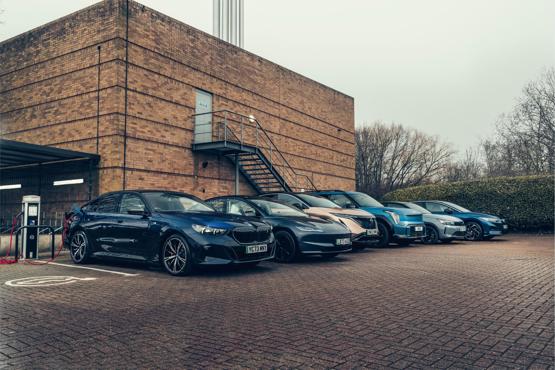
The cars were left overnight, with a full charge, meaning we’d be setting off cold, with no preconditioning. The rules were pretty simple. Cabin temperature was set to 21 degrees, each car was in its standard drive mode and regenerative braking was on its lowest setting. The cars were driven in convoy, with regular driver swaps, to make it as fair as possible.
Our route was only 145 miles, taking in a lengthy section of motorways and A roads, so we weren’t planning on running any of the cars empty. We also conducted a second test, in purely urban conditions, to see how efficient the cars were at lower speeds.
How they performed
None of our six-car test fleet were direct rivals, with each model occupying a different segment in the market.
The smallest, and cheapest, car that took part was the Vauxhall Corsa Electric, while the largest was the Kia EV9.
Tesla Model 3 Long Range
WLTP: 390 miles; 5.2mi/kWh
Tested: 300 miles; 4.0mi/kWh
The Model 3 has the longest official range of all the cars in our test at 390 miles. It has also just been given a thorough mid-life update, bringing a sharper nose, reconfigured interior and more tech.
Our version has a list price of £49,995, making it hard to overlook on a pound-per-mile basis. It uses two electric motors, with a combined output of 431PS, and has a battery capacity (usable) of 75kWh. Acceleration from 0-62mph takes just 4.4 seconds, making it the most rapid car here.
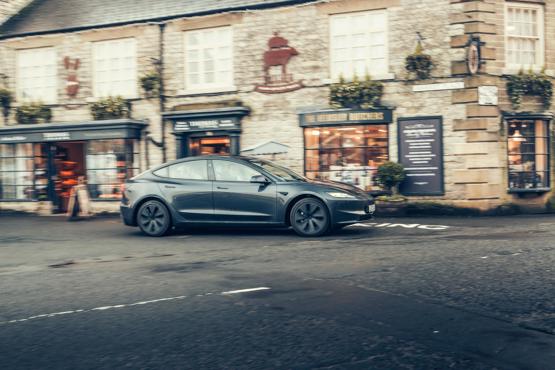
It made light work of our trip up north, returning an impressive 4.0mi/kWh. This put the Tesla on track to achieve a theoretical range of 300 miles before needing a charge.
The car’s strong cruising efficiency took a hit once we hit the urban section of our route, however. In urban conditions the figure slipped to 3.1mi/kWh.
There’s no denying the Tesla’s impressive capability, but the overall driving experience was scuppered by its ergonomics. Driving multiple cars back-to-back highlighted just how ridiculous Tesla’s decision to remove pretty much all physical switchgear – including indicator stalks – from the car’s cabin really is.
VW ID 7 Pro Match
WLTP: 383 miles; 4.9mi/kWh
Tested: 262 miles; 3.4mi/kWh
At the start, the ID 7 was predicting a range of 298 miles from its 77kWh (useable) battery. Quite a way off the WLTP figure of 383 miles, but still respectable given it’s the second-largest car in our test.
The ID 7 is the latest model to emerge from VW’s ID division. It’s a big fastback that straddles the mainstream and premium segments. Pricing places it alongside the Model 3, but it is more spacious than the BMW i5.
A single 286PS motor propels the ID 7. It’s quite a power deficit when compared to the Tesla, but acceleration is punchy enough. Where the ID 7 really shines is on the inside. It’s super spacious, comfortable and, unlike the Tesla, familiar.
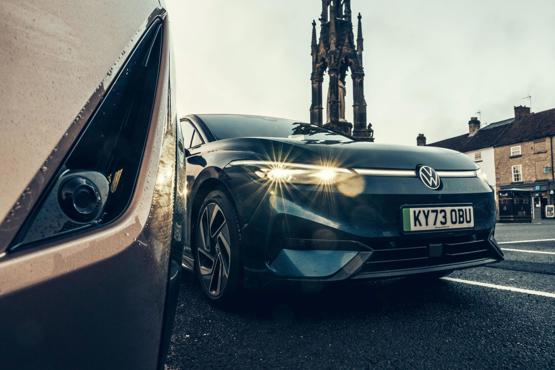
Our stint to Wetherby saw 3.4mi/kWh recorded on the ID 7’s trip computer. It’s a little less than we were expecting and marks the biggest difference between the claimed and real-world efficiency in this experiment. The ID7 we're testing isn't equipped with the optional heat pump, however.
It’s not all bad news for VW, though. When we switched to urban roads, the ID 7 started sipping electrons more conservatively, netting 3.8mi/kWh – the best of the group.
Vauxhall Corsa Electric Ultimate
WLTP: 246 miles; 5.1mi/kWh
Tested: 158 miles; 3.3mi/kWh
As a supermini, the Corsa Electric expectedly has the shortest official range and the smallest battery. Its 48.1kWh (useable) unit promises up to 246 miles (WLTP).
Vauxhall offers the car with two powertrain options following a recent facelift. The base model is equipped with a slightly smaller 46.3kWh battery and a 136PS motor. Our ‘long-range’ model has a slightly livelier 156PS.
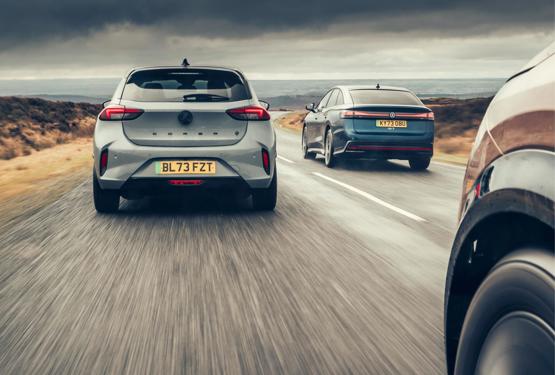
Despite the colder conditions, our fully charged Corsa was promising all 246 miles of its official range. After just 50 miles, the remaining range had fallen to 180 miles, however. And at 145 miles it had less than 40 miles remaining, according to the trip computer.
Small cars tend to work better at lower speeds and then munch their batteries once you hit the motorway, but the Corsa did quite the opposite.
It managed an indicated 3.5mi/kWh on the longer stint, but when we hit urban roads the Corsa’s efficiency plummeted to 3.0mi/kWh. Overall, it averaged out to 3.3mi/kWh, suggesting just 158 miles is possible in colder conditions.
BMW i5 eDrive 40 M Sport
WLTP: 357 miles; 4.4mi/kWh
Tested: 251 miles; 3.1mi/kWh
With the second-largest battery in our test, the i5 is car built to cover a lot of miles with little fuss. It’s the most luxurious, insulated and prestige car of the group. The 81kWh battery powers a 340PS motor, offered in M Sport guise (as tested here) or in Sport Edition. Prices start at £66,790, but our test car had a few options taking the price to a dizzying £92,570!
You certainly feel like you’re getting your money’s worth when you step inside the i5’s plush cabin and it handles motorway work effortlessly. This test is all about efficiency though and the BMW’s estimated range of 239 miles, from a full charge, seemed surprisingly short of the mark.
Once we were moving the computer recalibrated itself and 74 miles in, it was predicting a remaining range of 193 miles. It’s worth noting that if you use the BMW’s in-built sat-nav, the car will predict a more accurate figure. For our test, we were using Google Maps.
At the end of our route, the car reported an achievement of 3.1mi/kwh – good enough for around 250 miles of real-world driving on a single charge. We were hoping for a little more, given the car’s WLTP figure of 357 miles. On the urban section it dipped to 2.8mi/kWh.
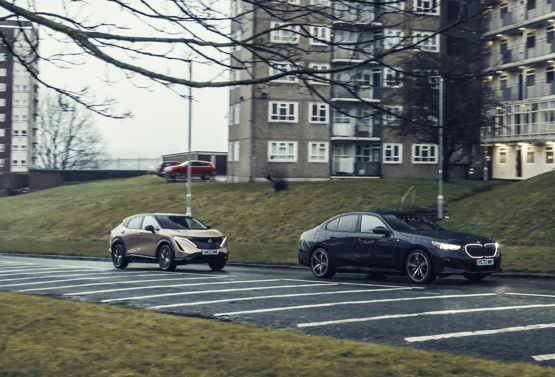
Nissan Ariya 63kWh Advance
WLTP: 250 miles; 3.9mi/kWh
Tested: 186 miles; 3.1mi/kWh
Nissan was a pioneer when it came to electrified powertrains. The brand’s Leaf was on sale years before any of the other manufacturers in our test had a mainstream EV.
The Ariya is its latest offering and sits alongside the best-selling Qashqai in the highly-competitive mid-size SUV segment.
Our test model was fitted with a 63kWh (useable) battery and a single 217PS electric motor, which promises a range of 250 miles. Nissan does offer a larger 87kWh unit and the option of all-wheel-drive, but this version is supposed to be the most efficient.
Range anxiety didn’t take long to set in, with the Ariya predicting just 163 miles from its fully charged battery. We hoped it was the result of a particularly exuberant delivery driver, who dropped the car off the day before, rather than a true representation of what lie ahead.
But halfway through our journey, the Ariya was predicting a remaining range of 119 miles – having covered just 73. Overall, it averaged 3.1mi/kWh, which isn’t the worst in our test by any stretch, but it does highlight the downsides of fitting a relatively small battery to larger car.
In our urban test, the Ariya managed to claw back some brownie points with an achievement if 3.3mi/kWh.
Kia EV9 GT Line S
WLTP: 313 miles; 3.2mi/kWh
Tested: 240 miles; 2.5mi/kWh
The sheer size of the EV9 is enough to make you think its battery will barely get it out of Peterborough, let alone on a lengthy motorway trip. Its dashboard display begged to differ though, with a promised 250 miles showing from a full charge.
To Kia’s credit, that’s almost precisely what the car managed. On the higher speed portion of our trip, it returned an indicated 2.5mi/kWh – not bad for a 2.6-tonne, 385PS, seven-seat giant. The EV9 also served as an excellent mobile lounge, keeping us warm and dry while the other cars in our test were being photographed.
And this version of the EV9 isn’t even the eco-champ. There’s a single motor model, powered by the same 96kWh (useable) battery, which can go even further.
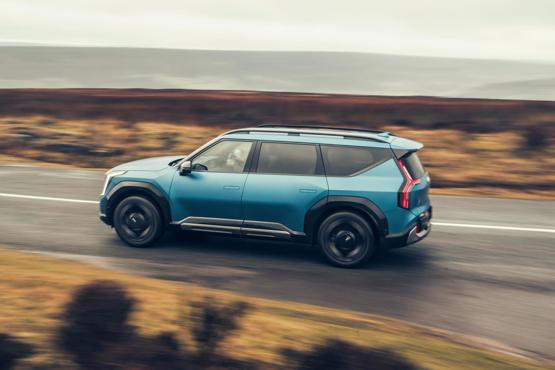
We’re pretty confident that, in the right conditions, an EV9 could achieve a real-world 300 miles from a charge.
The car’s 800-volt charging technology means refilling the battery could be completed in a fraction of the time some of our other cars took. A 10% to 80% charge can be completed in about 30 minutes, using a 150kW rapid charger.
Photography: Olgun Kordal



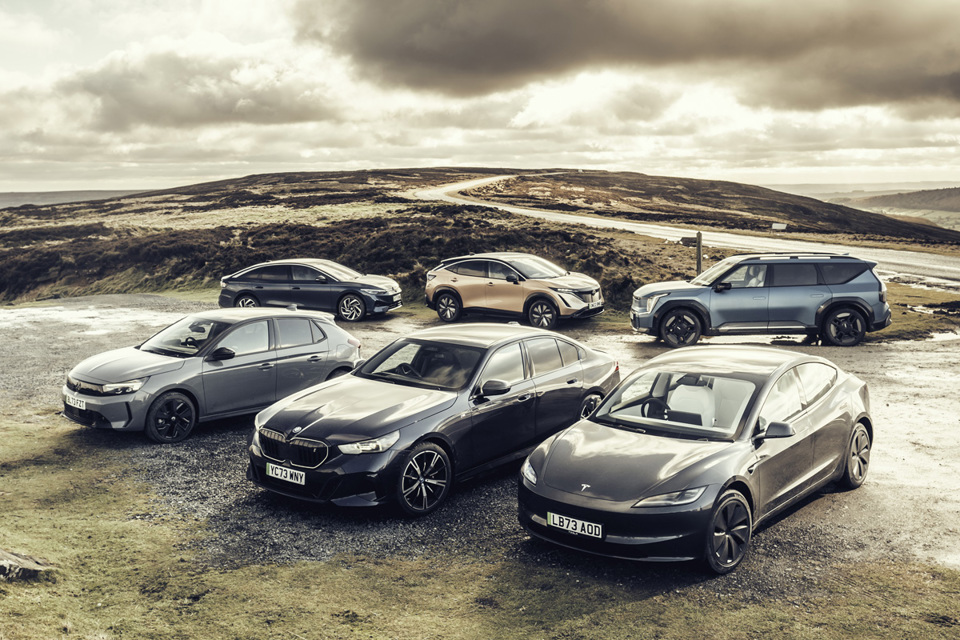















Login to comment
Comments
No comments have been made yet.